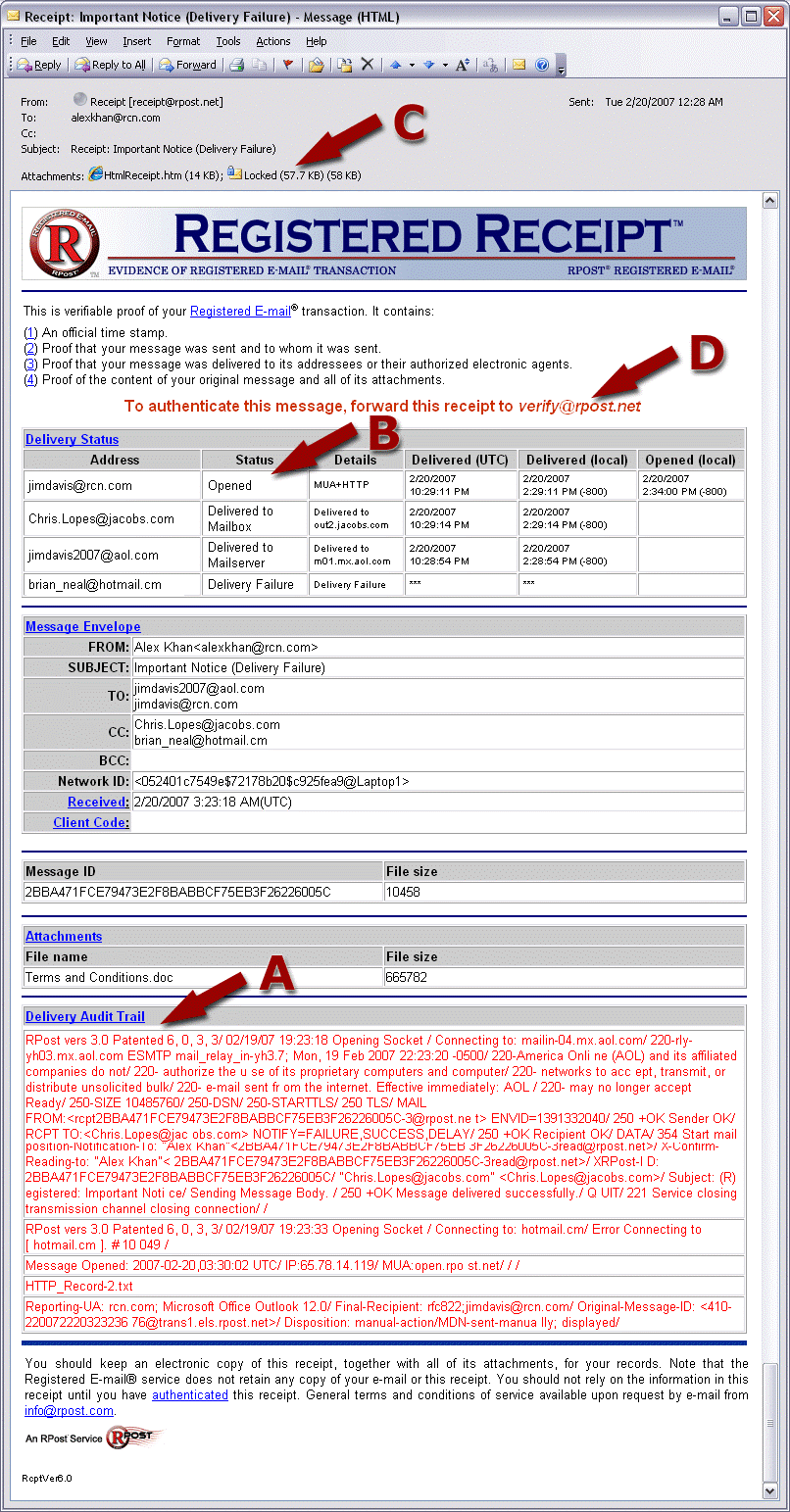
What is legal delivery? What is the difference between proof of sending, proof of delivery, and proof of receipt?
US law, e-commerce directives in Europe, and international laws of other countries provide that an electronic record is considered received by the intended recipient when it enters an information processing system that the recipient has designated or uses for the purpose of receiving electronic records of the type sent and from which the recipient is able to retrieve the electronic record, and is in a form capable of being processed by that system.
According to the legal analyses of the Uniform Electronic Transaction Act and other laws, legal timestamps for:
For email, legal proof of delivery is usually the goal, delivered to the email server authorized to receive mail for the recipient’s address. This might be a corporate mail server or the server of the Internet Service Provider that manages the individual’s mail account. It is important to note that an email message is considered received even if no one is aware of its receipt. That is, as with first class mail, or even certified or registered mail, once the message is delivered it makes no difference whether the addressee opens it.
If delivery to a mail server is delivery, proof of delivery must prove delivery to the recipient’s mail server.
It is sometimes possible, with conventional email technology, to elicit some form of acknowledgment of receipt from a receiving mail server or mail client. But these techniques work only some of the time, and, when they do, at best they can supply the sender with a plain text email acknowledgment that is easily forged or altered and tells nothing of the content of the message. The Registered Email™ patented technology proves delivery by recording the transactions between the Registered Email server and the recipient’s mail server as each message is delivered.
These transactions are a dialog conducted in the Simple Mail Transport Protocol (SMTP) that governs all Internet email communications. This English language protocol requires the recipient mail server to identify itself, declare itself prepared to accept mail on behalf of a named recipient, and acknowledge when the mail has been successfully received. By recording the SMTP dialog (along with other Internet forensics), the Registered Receipt email documents the recipient mail server’s declaration of accepting the mail, or “signature of acceptance from the recipient’s mail room.” For each delivered message, a transcript of the dialog is included in each Registered Email receipt in addition to other information comprising an audit trail of the message’s delivery. Since all Internet mail is delivered via SMTP, the Registered Email service can provide proof of delivery to any Internet destination.
In summary, the four levels of delivery, three being considered “legally received” as defined by the electronic transaction laws and case law, are:

These are analogous to traditional courier and receipt mail service records as noted below.


Registered Email™ technology is RPost patented.
Contact our integration team to learn more about how you can add Registered Email™, RMail, and RSign services to your workflows.